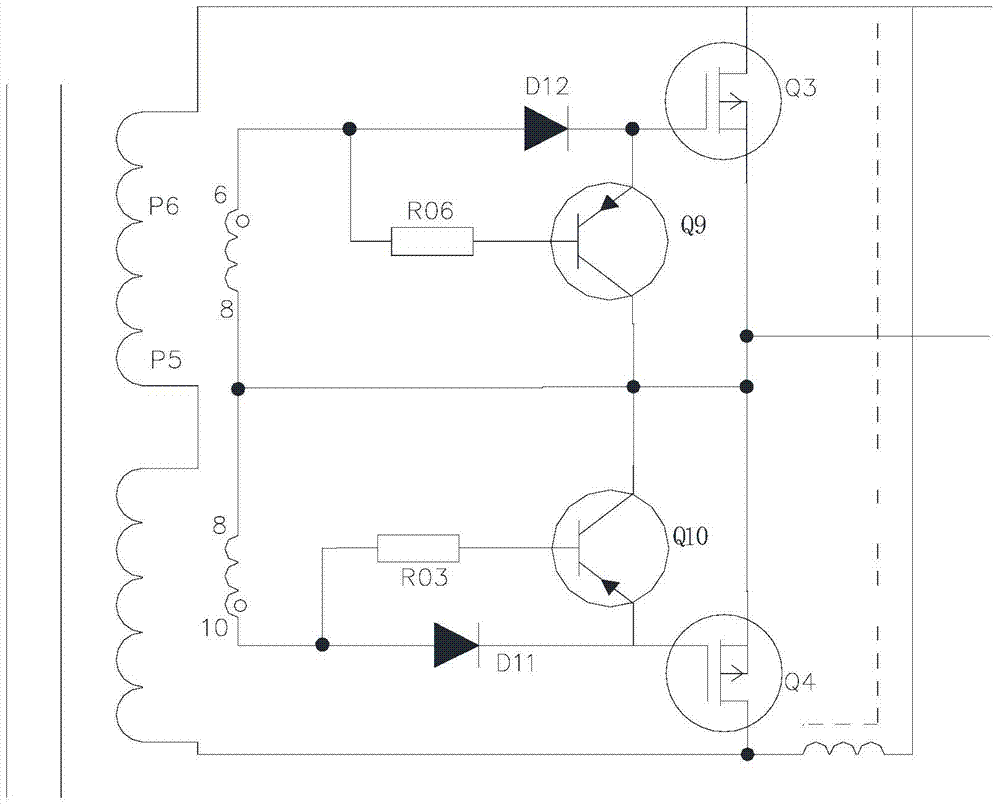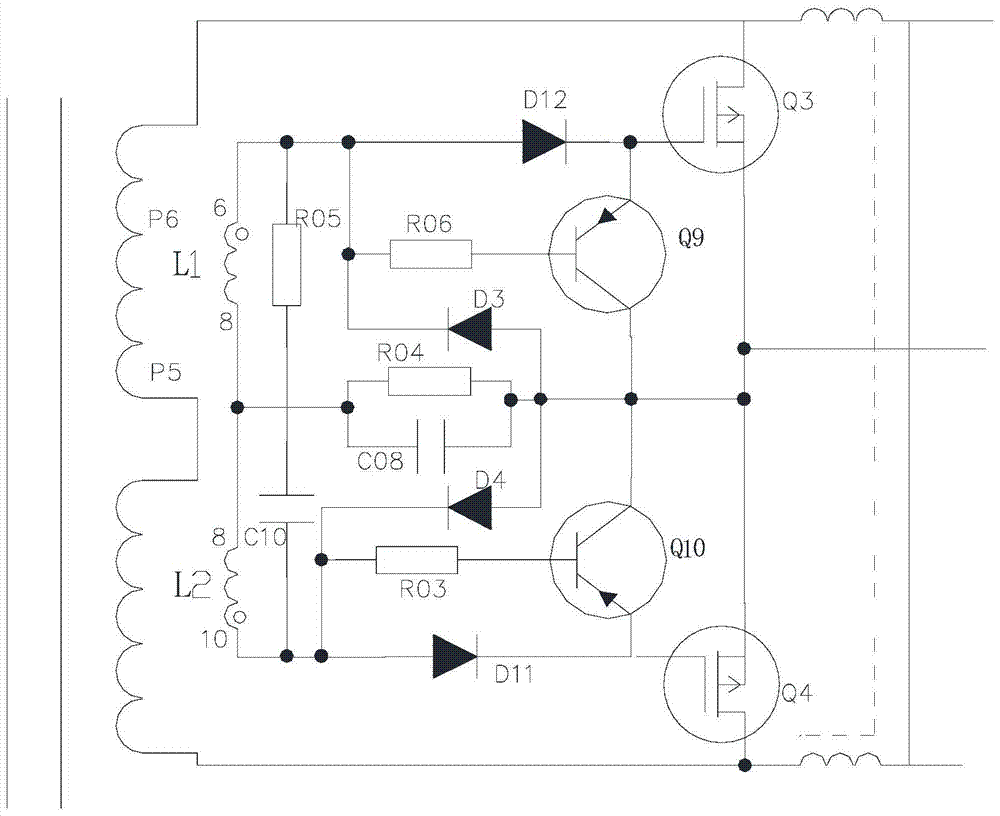Self-driven Synchronous Rectification Circuit with Dead Time Topology
A dead time and topology technology, applied in electrical components, output power conversion devices, AC power input conversion to DC power output, etc., can solve the problems of low efficiency of secondary synchronous rectification of high-frequency switching power supply effect of temperature, improving service life and reducing conduction loss
- Summary
- Abstract
- Description
- Claims
- Application Information
AI Technical Summary
Problems solved by technology
Method used
Image
Examples
Embodiment Construction
[0018] The present invention will be further elaborated below with reference to the accompanying drawings.
[0019] see figure 2 , the present invention has a self-driven synchronous rectification circuit with a dead time topology, which includes a self-driven winding L1 and L2 connected across the secondary side of the transformer; a rectifier circuit, and the synchronous rectification circuit is connected across the secondary side of the transformer The two ends of the side, more specifically, the synchronous rectification circuit is connected to the two ends of the taps of the self-driving windings L1 and L2; a high-frequency path circuit for continuing to conduct when the circuit is in the dead time, The high-frequency path circuit is coupled to the rectifier circuit, and the high-frequency path circuit includes: a resistor R04, a capacitor C08 connected in parallel to both ends of the resistor R04, and a capacitor C08 connected in parallel with the resistor R04 An RC ne...
PUM
 Login to View More
Login to View More Abstract
Description
Claims
Application Information
 Login to View More
Login to View More - R&D
- Intellectual Property
- Life Sciences
- Materials
- Tech Scout
- Unparalleled Data Quality
- Higher Quality Content
- 60% Fewer Hallucinations
Browse by: Latest US Patents, China's latest patents, Technical Efficacy Thesaurus, Application Domain, Technology Topic, Popular Technical Reports.
© 2025 PatSnap. All rights reserved.Legal|Privacy policy|Modern Slavery Act Transparency Statement|Sitemap|About US| Contact US: help@patsnap.com



